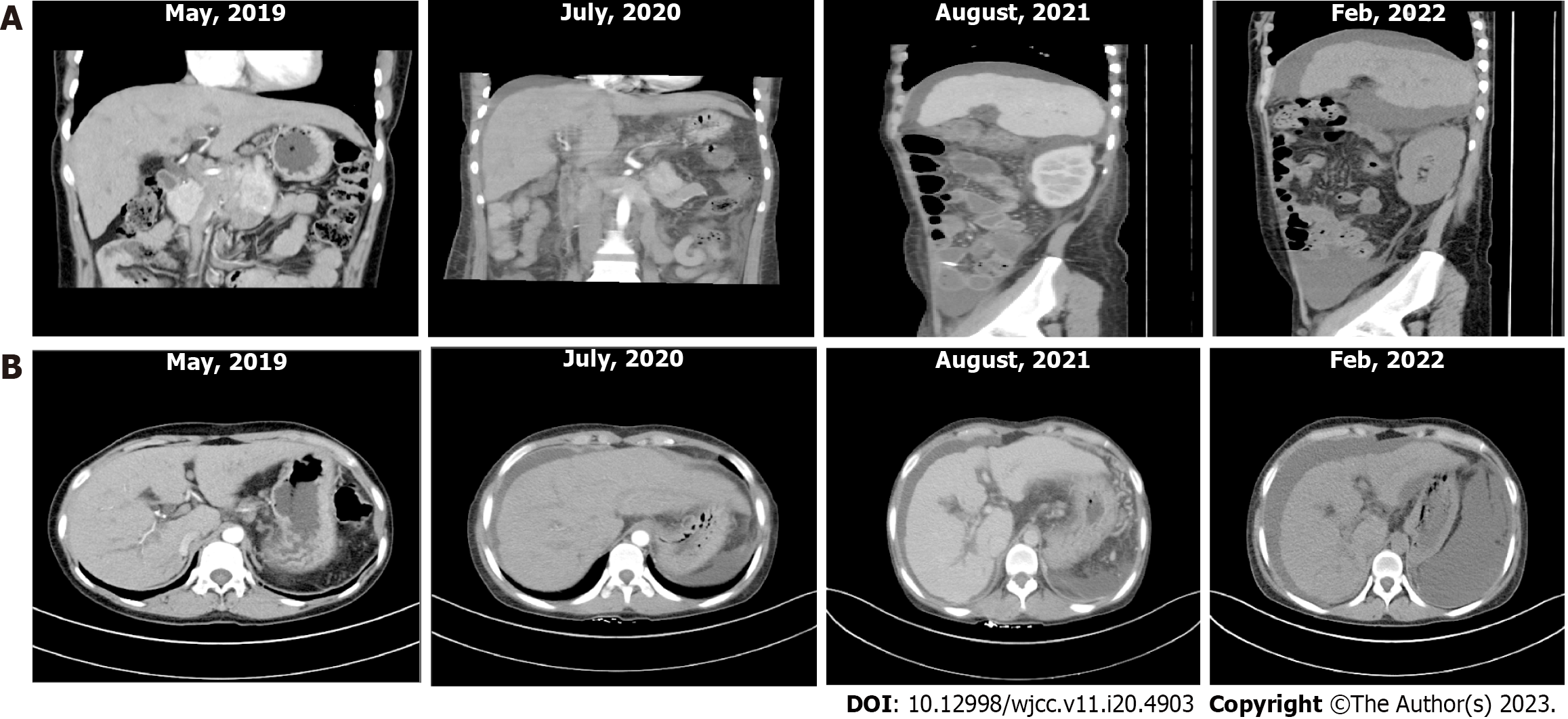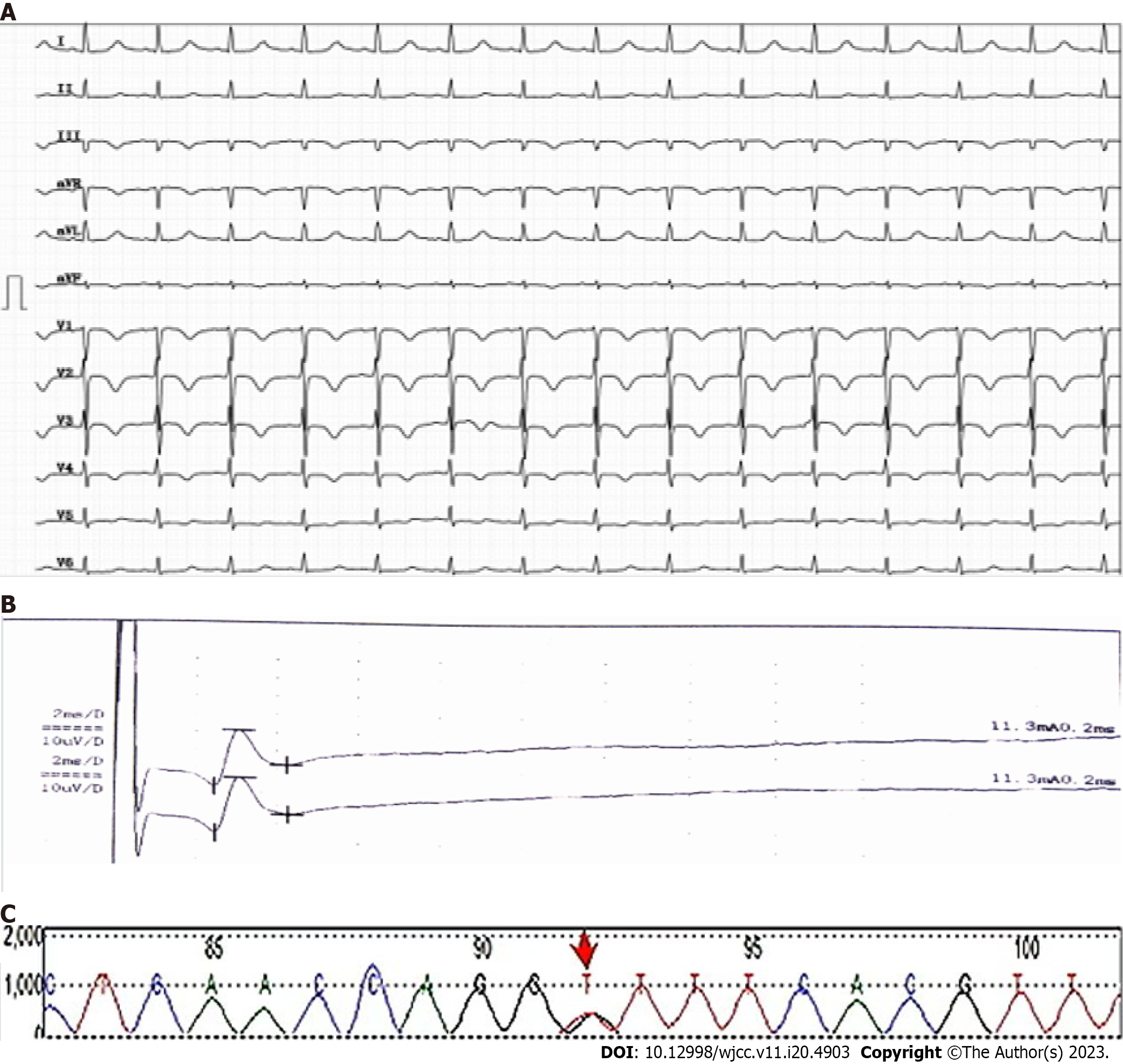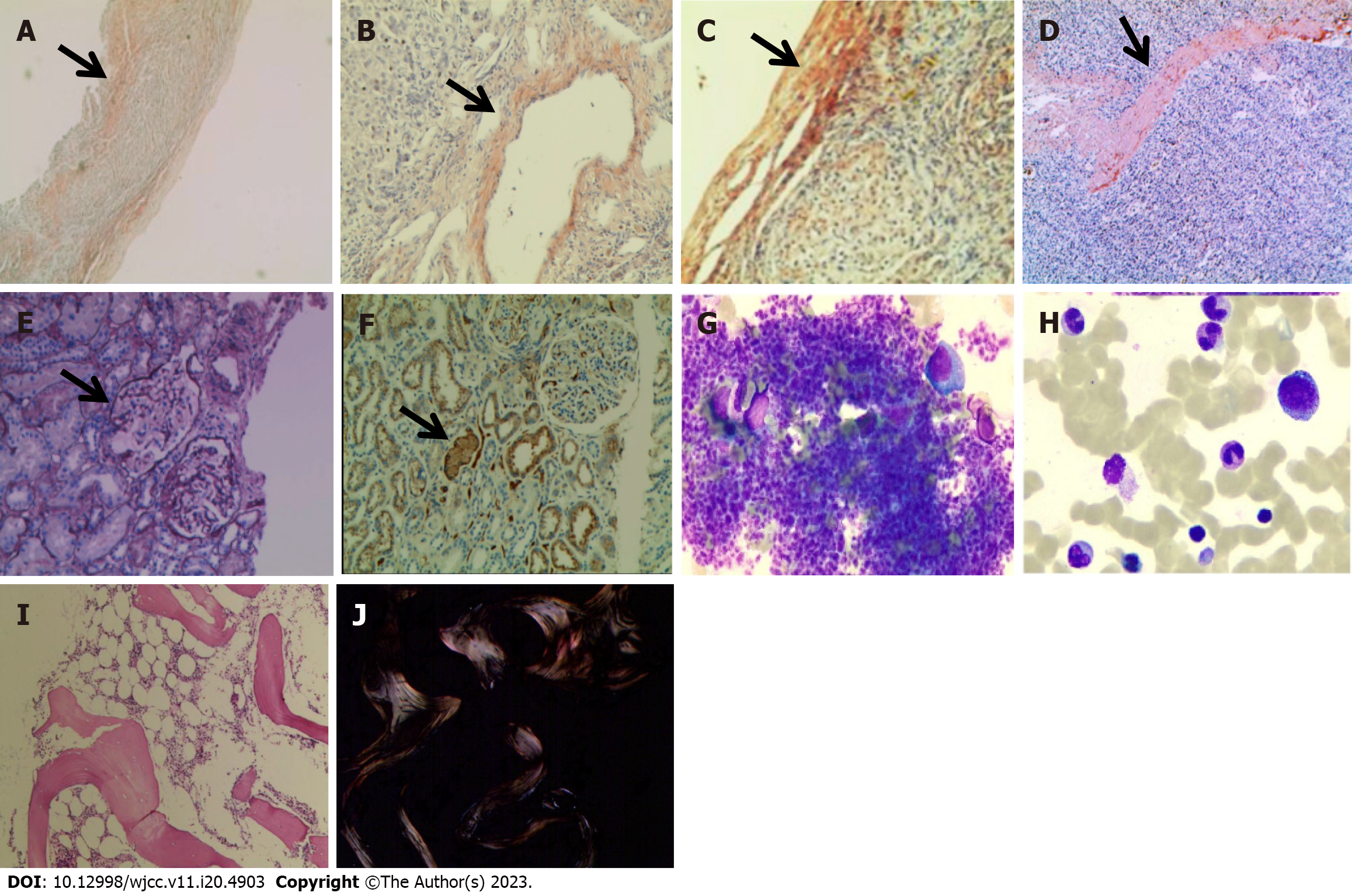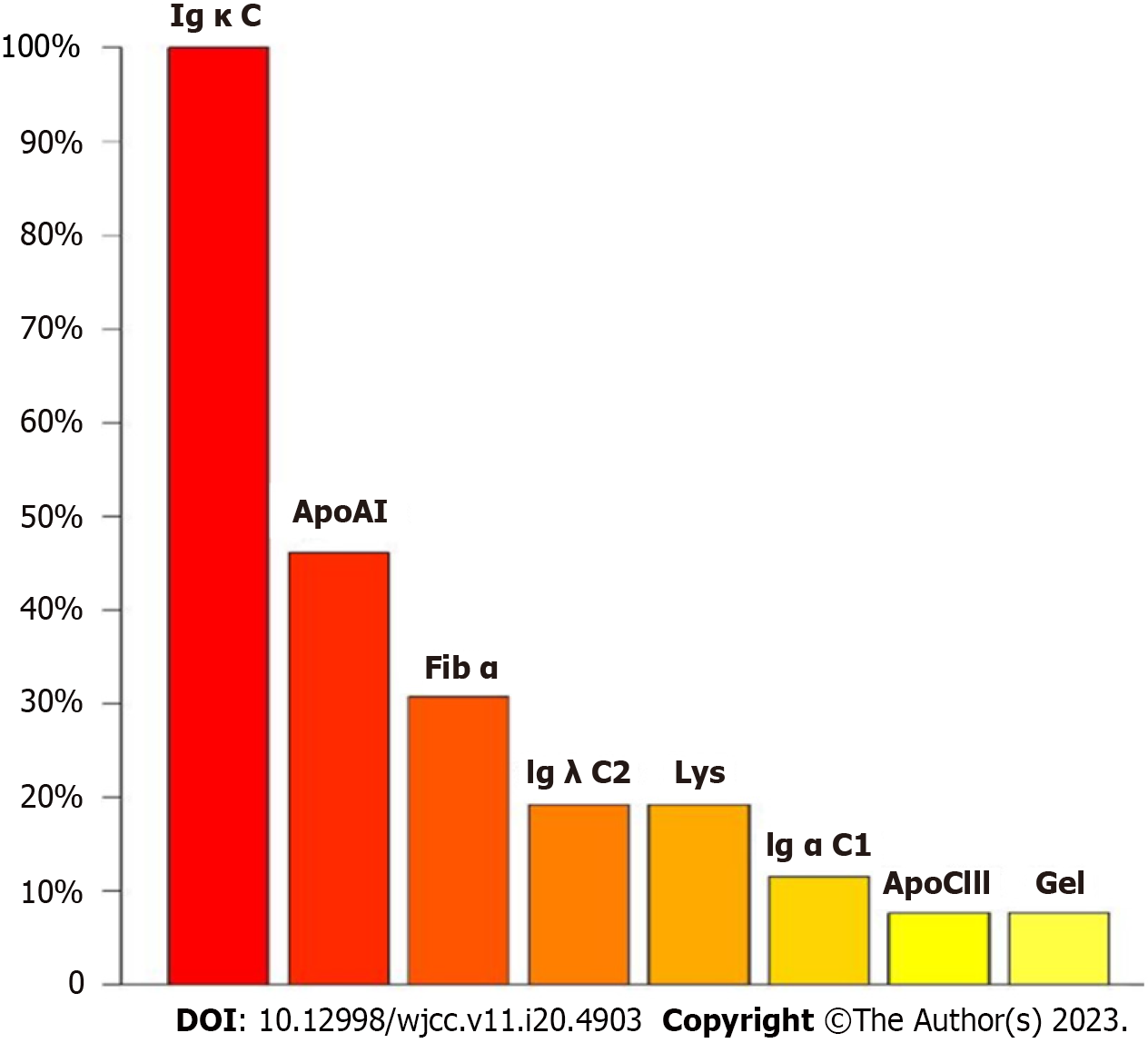Copyright
©The Author(s) 2023.
World J Clin Cases. Jul 16, 2023; 11(20): 4903-4911
Published online Jul 16, 2023. doi: 10.12998/wjcc.v11.i20.4903
Published online Jul 16, 2023. doi: 10.12998/wjcc.v11.i20.4903
Figure 1 Epigastrium enhanced computed tomography, gastroscopy, postoperative spleen appearance, pathological image.
A: On November 2018, computed tomography (CT) of upper abdomen enhanced sagittal plane; B: CT enhanced coronal plane of upper abdomen in November 2018; C: Gastroscopy revealed esophageal varices; D: Spleen appearance (27 cm × 16 cm); E: Spleen stained with hematoxylin and eosin (H&E) × 100; F: H&E staining of liver tissue × 100; G: Masson staining of liver tissue (original magnification × 100); H: CK7 staining of liver tissue (original magnification × 100).
Figure 2 Enhanced computed tomography image of epigastrium from May 2019 to February 2022.
A: Sagittal plane view; B: Coronal plane view.
Figure 3 Electrocardiogram, electromyography, and ATP-binding cassette, subfamily B gene mutation sites.
A: Electrocardiogram from January 2022. Note: The electrocardiogram shows sinus tachycardia, heart rate 124 bpm, left ventricular high voltage T wave changes (V1-V4 low level, inversion), and QT interval prolongation; B: Electromyography from January 2022. Note: The electromyography showed that the conduction velocity of the bilateral superficial peroneal nerve was slightly slowed and the amplitude was reduced; C: The ATP-binding cassette, subfamily B (ABCB4) c.2318 G>T heterozygous mutation. Note: The red arrow shows a G to T transformation of the 2318 base on chromosome 7, resulting in the transformation of codon 773 from Gly to Val and the encoding product from glycine to valine.
Figure 4 Congo red staining of the liver, spleen, kidney, and bone marrow, immunohistochemical staining for kidneys, and bone marrow biopsy.
A: Congo red staining of liver tissue is 50 ×; B and C: Congo red staining of liver tissue 100 ×; D: 100 × Congo red staining of spleen tissue; E: Congo red staining of kidney tissue 100 ×; F: Renal tissue κ light chain was 100 × positive by immunohistochemistry; G: Bone marrow routine 100 ×; H: Bone marrow routine 200 ×; I: Bone marrow biopsy 100 ×; J: Bone marrow Congo red staining 100 ×.
Figure 5 Mass spectrometry analysis of liver tissue amyloidosis.
Note: The relative abundance of Igκ is the highest, suggesting that the type is systemic k light chain amyloidosis.
- Citation: Cheng N, Qin YJ, Zhang Q, Li H. ABCB4 gene mutation-associated cirrhosis with systemic amyloidosis: A case report. World J Clin Cases 2023; 11(20): 4903-4911
- URL: https://www.wjgnet.com/2307-8960/full/v11/i20/4903.htm
- DOI: https://dx.doi.org/10.12998/wjcc.v11.i20.4903

















